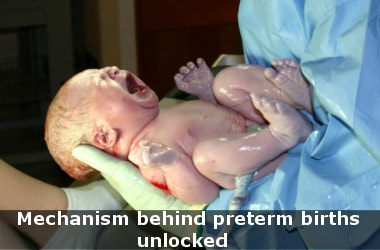Mechanism behind preterm births unlocked
Q. Scientists found that GBS bacteria were associated with preterm birth. What does GBS stand for?- Published on 09 Sep 16a. Group Bacillus Streptococcus
b. Group B Streptococcus
c. Both of the above
d. Neither of the above
ANSWER: Group B Streptococcus

Indian researchers unlocked the mechanisms by which preterm birth occurs.
- This birth is between 28 to 32 weeks of gestation.
- At present India accounts for 35 percent of preterm births in the world- the highest burden across the globe
- Researchers found that gram positive Group B Streptococcus bacterial produced small balloons called membrane vesicles which contained toxins that destroy foetal and maternal cells.
- They also kill collagen that keep the cells together
- GBS bacteria are found in the human vagina- numbers can shoot up in some pregnant women
- The GBS bacteria has been associated with premature rupture of amniotic membrane and preterm birth
- Researchers found that toxins in the vesicles fragmented the collagen of the amniotic membraneFragmentation of the collagen leads to loss in elasticity and weakening of the amniotic membrane making it susceptible to rupture due to pressure from the growing foetus
- This leads to preterm birth